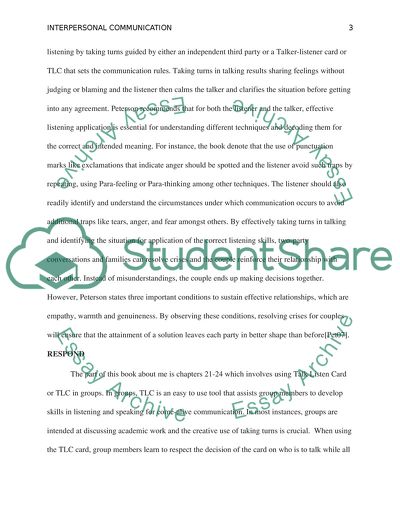Cite this document
(Interpersonal Communication Book Report/Review Example | Topics and Well Written Essays - 1500 words, n.d.)
Interpersonal Communication Book Report/Review Example | Topics and Well Written Essays - 1500 words. Retrieved from https://studentshare.org/journalism-communication/1832856-studies-in-interpersonal-communications
Interpersonal Communication Book Report/Review Example | Topics and Well Written Essays - 1500 words. Retrieved from https://studentshare.org/journalism-communication/1832856-studies-in-interpersonal-communications
(Interpersonal Communication Book Report/Review Example | Topics and Well Written Essays - 1500 Words)
Interpersonal Communication Book Report/Review Example | Topics and Well Written Essays - 1500 Words. https://studentshare.org/journalism-communication/1832856-studies-in-interpersonal-communications.
Interpersonal Communication Book Report/Review Example | Topics and Well Written Essays - 1500 Words. https://studentshare.org/journalism-communication/1832856-studies-in-interpersonal-communications.
“Interpersonal Communication Book Report/Review Example | Topics and Well Written Essays - 1500 Words”, n.d. https://studentshare.org/journalism-communication/1832856-studies-in-interpersonal-communications.


